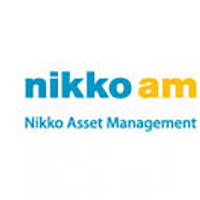Hydrogen Fuel Cell or Electric Vehicles?

Amova AM
In comparison, the Tesla Model 3 has a 360km range (certainly, the Mirai wins here), and retails at US$35k (before subsidies, etc.) – a big discount to where the Mirai gets priced at, for significantly better performance (acceleration, torque, etc.). The chart below shows Tesla’s (and only Tesla’s, not including any of its competitors or the government’s) US and EU re-charging network.
So, to conclude:
Is it possible? Never say never. As Alvin Toffler noted, “technology makes more technology possible”. And so it is certainly possible that fuel-cell vehicles can disrupt electric vehicles as well as internal-combustion-engine vehicles.
Is it plausible? It sure doesn’t appear that way.
- FCVs need to reduce costs by 40% to compete effectively with a Tesla Model 3 (which, at its price point, only addresses about 30% of the car-buying population, mind you). And this is just on the initial purchase price today.
- The fuelling network needs to upscale, and how! Currently, there are about 10 hydrogen fuelling stations in California (vs. about 50 Tesla charging stations) and about 80 in Japan (vs. 10 Tesla charging stations). So the fuelling network needs as major investment globally and it is unlikely Toyota will foot that bill single-handedly. From a government’s perspective, unless there are clear, and significantly greater, benefits to investing in FCVs over EVs, why bother; why not allow the market to run its own course and fund its own growth? This then begs the question – who will pay for the network?
- Toyota started development of FCVs back in 1992 (i.e. over 20 years ago). As things stand, virtually EVERY automaker in the world (Volkswagen, Ford, General Motors, BMW, Nissan-Renault, the Chinese – BYD, Geely including Volvo which they own) have backed EV technology, with some saying EVs will account for a quarter of their sales in 7-8 years’ time! Admittedly, automakers haven’t been renowned for making accurate prognoses, but it still beggars belief that none of them have made any public reference to FCVs. And until we see a lot more investment going into FCVs, it is unlikely that the R&D of one single company will be able to deliver the improvement needed to compete effectively.
4 topics

Nikko Asset Management is one of Asia’s largest asset managers, providing high-conviction, active fund management across a range of Equity, Fixed Income, Multi-Asset and Alternative strategies. In April 2021, Yarra Capital Management acquired...
Expertise

Nikko Asset Management is one of Asia’s largest asset managers, providing high-conviction, active fund management across a range of Equity, Fixed Income, Multi-Asset and Alternative strategies. In April 2021, Yarra Capital Management acquired...

